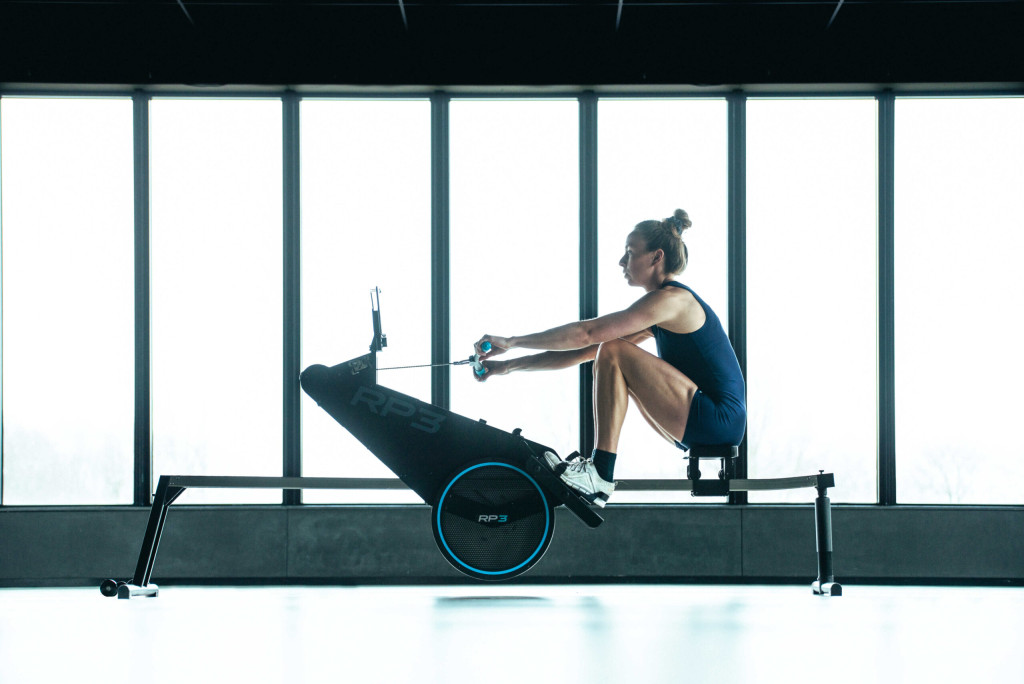Best low-impact cardio options for home
Discover 5 effective low-impact cardio options for home workouts that protect your joints while boosting fitness. Transform your health journey with these sustainable exercises for
In a world where time is precious, finding exercise that delivers maximum benefits in minimum time has become the holy grail of fitness. Rowing stands out as an exceptional solution, offering a comprehensive workout that challenges your entire body in sessions that fit even the busiest schedules. Whether you’re looking to build strength, improve cardiovascular health, or simply maintain fitness without spending hours at the gym, these sub-30-minute rowing workouts deliver remarkable results with impressive efficiency. As always, before starting any new exercise regimen, consult with your doctor to ensure it’s appropriate for your individual health circumstances.
The secret to rowing’s exceptional efficiency lies in its full-body engagement. Unlike exercises that isolate specific muscle groups, rowing activates an impressive 85% of your muscles simultaneously. This comprehensive muscle recruitment means you’re strengthening your legs, core, back, and arms all in one fluid motion.
When you perform a rowing stroke, your powerful leg muscles initiate the movement, your core and back muscles transfer that power, and your arms finish the motion. This synchronized chain reaction creates a uniquely efficient exercise that burns calories at a remarkable rate – often upwards of 400-600 calories in just 30 minutes.
The beauty of rowing is that it combines strength training and cardiovascular exercise in one movement. While running primarily works your lower body and most weightlifting isolates specific muscle groups, rowing gives you the benefits of both worlds in a single, time-efficient workout. This makes short rowing sessions substantially more effective than longer workouts using many other exercise forms.
You might wonder if half an hour on a rowing machine is genuinely enough to make meaningful fitness gains. The answer is a resounding yes. The physiological benefits of shorter, higher-intensity rowing workouts often surpass those of longer, steady-state sessions for many fitness goals.
High-intensity interval training (HIIT) on a rowing machine triggers what exercise physiologists call the “afterburn effect,” where your body continues burning calories at an elevated rate for hours after your workout ends. This means your metabolism stays elevated long after you’ve finished your 20-minute session.
Short, intense rowing workouts are particularly effective for improving cardiovascular fitness. Your heart and lungs adapt quickly to the challenge of alternating between periods of intense effort and recovery. These adaptations lead to improved oxygen utilization, enhanced heart function, and better endurance – all from workouts that take less time than a typical TV episode.
Even better, these shorter sessions are often more sustainable in the long run. It’s much easier to commit to three 25-minute workouts each week than trying to find an hour or more several times weekly. This consistency ultimately delivers better results than sporadic longer sessions.
While short rowing workouts are incredibly effective, they do require working at higher intensities than you might be accustomed to. This presents several common challenges for home exercisers.
Finding the right intensity is often the first hurdle. A good rule of thumb is to work at a level where talking becomes difficult but not impossible. If you can chat easily, increase your intensity; if you can’t speak at all, dial it back slightly. For beginners, use the “rate of perceived exertion” scale, aiming for a 7-8 out of 10 during hard intervals.
Maintaining proper form becomes increasingly difficult as fatigue sets in. Focus on these key technique points even when tired:
Staying motivated during intense workouts can be challenging. Try setting specific, measurable goals for each session rather than vague objectives. Music with the appropriate tempo can dramatically improve your workout experience. Finally, tracking your progress over time provides powerful motivation as you see your fitness metrics improve.
This efficient workout delivers maximum impact in minimal time by combining high-intensity intervals with active recovery periods. The workout consists of three parts:
| Phase | Duration | Intensity | Stroke Rate |
|---|---|---|---|
| Warm-up | 4 minutes | Light to moderate (40-50% effort) | 18-20 strokes per minute |
| Main intervals | 12 minutes | Alternating: 30 sec high intensity (80-90% effort), 30 sec active recovery (40% effort) | 26-30 during high intensity, 18-20 during recovery |
| Cool-down | 4 minutes | Light (30-40% effort) | 18-20 strokes per minute |
During the main interval section, focus on maintaining powerful leg drives with good technique. The rapid transitions between high and low intensity create a substantial training effect despite the short duration. If 30-second intervals feel too challenging initially, begin with 20 seconds of high intensity and 40 seconds of recovery, gradually working toward equal intervals.
For the resistance setting, choose a level that allows you to maintain proper form throughout. You should feel the resistance immediately when you drive with your legs, but it shouldn’t be so heavy that your form breaks down.
Not every workout needs to push your limits. This gentle 15-minute session is perfect for active recovery days or when you need stress reduction more than performance enhancement.
Begin with 2 minutes of very light rowing at 16-18 strokes per minute, focusing on your breathing. For the next 11 minutes, maintain a steady, rhythmic pace at about 20 strokes per minute and 50-60% of your maximum effort. The key is consistency and mindfulness rather than intensity.
Breathing technique plays a crucial role in this recovery workout. Try synchronizing your breath with your stroke – exhale during the drive phase and inhale during the recovery. This breath-movement coordination enhances the meditative quality of the session.
Keep your movements fluid and relaxed. Pay attention to the sensations in your body, the rhythm of your breathing, and the repetitive sound of the rowing machine. This mindful approach transforms a simple exercise session into a powerful stress-management tool.
Finish with 2 minutes of even lighter rowing, gradually decreasing your pace and focusing on deep, relaxed breathing. You should feel refreshed rather than exhausted after completing this workout.
This comprehensive workout maximizes your 30 minutes by combining steady-state rowing with strategic bodyweight exercises:
This format prevents boredom while maximizing cardiovascular benefits and adding strength elements. The off-machine exercises target complementary muscle groups, creating a truly comprehensive full-body session. The varied structure also makes the workout feel shorter, as you’re frequently changing activities.
Monitoring your improvement is important for staying motivated and ensuring your workouts remain effective. However, there’s a fine line between productive tracking and becoming overly fixated on performance metrics.
Focus on stroke efficiency rather than just raw power or speed. A smooth power curve indicates you’re applying force evenly throughout the stroke, which translates to better performance and reduced injury risk. Watch how this curve evolves over weeks of consistent practice.
Workout consistency often predicts progress better than any single performance metric. Track how many sessions you complete each week rather than obsessing over every workout’s numbers. Maintaining a regular schedule of three 20-30 minute sessions weekly will yield better results than sporadic “personal best” attempts.
Subjective measures matter tremendously. Keep note of your energy levels, sleep quality, and overall well-being as your rowing practice develops. These indicators often reveal fitness improvements before they show up in your performance data.
Remember that progress isn’t linear. Some days you’ll feel stronger than others, and that’s perfectly normal. Look for trends over weeks and months rather than comparing consecutive sessions.
At RP3 Rowing, we believe that effective workouts don’t require hours of your time. Our dynamic rowing machines are specifically designed to provide the most realistic rowing experience possible, allowing you to maximize the efficiency of even your shortest workout sessions. Whether you choose the Model T for team training or the Model S for individual use, you’ll experience the unique benefits of our dynamic system that moves with you, just like a real boat on water. Understanding the science of rowing helps you get the most from these time-efficient workouts and the right equipment, achieving remarkable fitness results even with the busiest of schedules.
If you’re interested in learning more about the benefits of rowing, reach out to our team of experts today.
Discover 5 effective low-impact cardio options for home workouts that protect your joints while boosting fitness. Transform your health journey with these sustainable exercises for
Discover 5 effective low-impact exercises that protect your back while maintaining fitness intensity. Learn proper form techniques to strengthen your spine without risking injury.
Discover 5 effective home workouts that build strength without stressing your joints. Learn fluid movement techniques for pain-free exercise that delivers results while protecting your
Discover effective low-impact fitness strategies that build strength and cardio health without damaging your joints. Learn sustainable workout techniques for long-term health and injury prevention.
Discover 5 effective full-body low-impact workouts perfect for beginners that protect your joints while building strength and fitness. Start your sustainable exercise journey today!
Discover how low-impact fitness creates sustainable health benefits without joint pain. Learn 5 full-body workouts that deliver results while preserving your body for decades of
Discover why low-impact workouts deliver powerful fitness results without joint damage. Learn 6 key benefits and find the perfect exercise for sustainable daily fitness that
Discover why low-impact training on recovery days accelerates muscle repair, prevents injuries, and boosts long-term fitness gains. Learn optimal activities and avoid common recovery mistakes.
Discover why rowing machines deliver a complete workout while protecting your joints. Engage 85% of your muscles with zero impact stress—perfect for fitness enthusiasts of
Discover effective low-impact exercises perfect for returning to fitness after breaks or injuries. Learn 5 joint-friendly workouts that rebuild strength while preventing setbacks on your
Discover how rowing uniquely engages 85% of your muscles while enhancing flexibility in one efficient workout. Build strength and mobility simultaneously without stressing your joints.
Discover 5 low-impact routines that challenge your entire body without stressing your joints. Build strength and burn calories while protecting your knees, hips, and spine.
Discover how consistent low-impact activity delivers powerful physical and mental benefits without joint stress. Build fitness, reduce stress, and improve mobility through sustainable daily movement
Discover why rowing machines offer the ultimate low-impact, full-body workout for home fitness. Get 85% muscle engagement with minimal joint stress—perfect for all ages and
Discover how low-impact exercise protects your joints while delivering powerful fitness results. Learn 5 joint-friendly workouts that maintain mobility and prevent pain as you age.
Discover how to build sustainable low-impact fitness habits that protect your joints while delivering exceptional results. Learn proven strategies for lifelong exercise consistency without pain.

We will send you a personal quote as soon as possible.
As soon as the quote is ready, you will receive a link by email to order directly.
